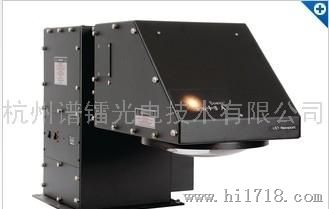-
图文详情
-
产品属性
-
相关推荐
- 产品品牌:
- Newport
- 产品型号:
- 94123A
Oriel Sol3A Class AAA Solar Simulators
- Output beam sizes 2x2", 4x4”, 6x6” , 8x8", and 12 x 12"
- Factory certified Class AAA CW systems
- Calibration certificate validating Class AAA performance for all 3 standards: IEC, ASTM and JIS
- Long-lived, highly reliable instruments designed specifically for 24/7 production environments
- Integrated variable attenuator provides capability to vary output from 0.1 to 1.0 suns
- Easy lamp replacement
- Non-reflective black finish reduces stray light
- Temperature sensors and interlocks ensure operator safety
Leveraging over 40 years of experience in light source and power supply design, Newport’s Oriel® brand is proud to introduce the latest innovation in solar simulators – the Oriel Sol3A™ Class AAA Solar Simulator family. The product family includes:
Model 94123A = 12 x 12 inch Beam Size
Model 94083A = 8 x 8 inch Beam Size
Model 94063A = 6 x 6 inch Beam Size
Model 94043A = 4 x 4 inch Beam Size
Model 94023A = 2 x 2 inch Beam Size
All Oriel Sol3A solar simulators are certified to IEC 60904-9 Edition 2 (2007), JIS C 8912, and ASTM E927-5 standards for Spectral Match, Non-Uniformity of Irradiance, and Temporal Instability of Irradiance. By convention, Class AAA is reported with the first letter representing Spectral performance, the second letter Uniformity of Irradiance, and the third letter Temporal Stability. The Oriel SOL 3A solar simulators all use a single lamp design to meet not one or two, but all three performance criteria without compromising the 1 Sun output power, providing true Class AAA performance. The Oriel Sol3A uses a black non-reflective finish to minimize stray light and incorporates captive screws for all panels requiring user access to facilitate lamp replacement, alignment, and filter changes. Safety interlocks prevent inadvertent exposure to UV light. The Oriel Sol3A rugged design is backed by the Newport Corporation's world wide organization.
Table 1 Class AAA Standards and Specifications
| Organization | IEC | JIS | ASTM |
| Performance Parameter | 60904-9-2007 | C 8912 | E92-05 |
| Spectral Match (fraction of ideal percentage) |
0.75 - 1.25 | 0.75 - 1.25 | 0.75 - 1.25 |
| Non-Uniformity of Irradiance | 2.0% | <±2% | 2% |
| Temporal Instability | 0.5% STI | <±1% | 2% |
| <2.0% LTI |
Spectral Match
The standards define the spectral match of a solar simulator as a percentage of the integrated intensity in 6 spectral ranges (listed in Table 2). Any deviation from the specified percentages must then lie within a range that determines the class of the simulator. For Class AAA, this range is 0.75 to 1.25 times the ideal percentage.
Spectral Match
Table 2 Ideal Spectral Match Defined by IEC Standards
| Spectral Range (nm) | Total Irradiance Range (%) | Ideal % |
|---|---|---|
| 400 - 500 | 13.9 - 23.1 | 18.5 |
| 500 - 600 | 15.1 - 25.1 | 20.1 |
| 600 - 700 | 13.7 - 22.9 | 18.3 |
| 700 - 800 | 11.1 - 18.5 | 14.8 |
| 800 - 900 | 9.2 - 15.3 | 12.2 |
| 900 - 1100 | 12.1 - 20.1 | 16.1 |
Fig. 1 Oriel Sol3A Spectral Match with AM 1.5G spectral correction filter meets IEC, JIS, ASTM Class A requirements to for spectral match.
Spatial Uniformity of Irradiance
The irradiance uniformity over the work area is the most difficult Class AAA requirement to achieve and maintain. Hot spots can lead to significant errors in measured cell efficiency and can cause inaccurate binning of cells. The Class AAA spatial non-uniformity performance standard is designed to minimize the impact of hot spots and has a very stringent requirement of ≤2%. The plot below shows the uniformity of the irradiance across a typical simulator working area. Each unit will come with a plot of irradiance non-uniformity. The working distance ranges for each simulator are listed in Table 3.
Sol3A Working Distances
Table 3 Working Distances
| Model | Size | Working Distance Range (Inches) |
|---|---|---|
| 94023A | 2 x 2 (50.8 x 50.8) | 12.0 ±0.5 |
| 94043A | 4 x 4 (101.6 x 101.6) | 4.0 ±0.5 |
| 94063A | 6 x 6 (152.4 x 152.4) | 5.0 ±0.5 |
| 94083A | 8 x 8 (203.2 x 203.2) | 15.0 ±0.5 |
| 94123A | 12x12 (304.8 x 304.8) |
Fig. 2 Measured Uniformity of a 2x2” Oriel Class AAA Solar Simulator.
Temporal Instability
Temporal Instability is the third performance parameter of Class AAA standards. It requires that the output light be stable over time in order to ensure that the lamp fluctuations do not distort the measurement of solar cell efficiency. Oriel’s Sol3A easily meets the requirements for temporal instability as defined by the IEC, ASTM, and JIS standards. The IEC 60904-9 (2007) has the most stringent requirements for short term instability with a maximum allowable level of 0.5%. Figure 4 shows a typical instability response for an Oriel Sol3A utilizing a 50 millisecond data acquisition time.
| Elapsed Time (sec) | 60 |
| No. of Data Points | 1200 |
| % Instability | 0.369 |
Fig. 3 Typical Output Variation of a 1.6 kW Oriel Sol3A Solar Simulator Over Time.

